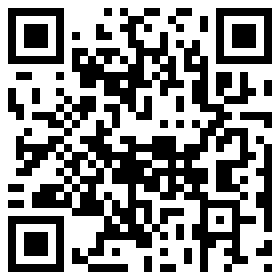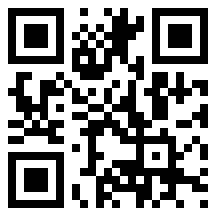I’ve been asked to propose a task force to promote the use of pedagogical technology at the place where I work. This has really got me thinking about how to preach to someone other than the choir. I think I'm going to need some help from my community on this one. I'm being asked to really effect change at an educational institute where there is not a lot of awareness of the very latest issues in educational technology and their impacts on learning. How do I start this ball rolling?
The first issue to be addressed before such a task force can be agreed upon is why it is needed? I believe it is needed, but why would anyone else think so? So the first task of the task force should be to determine its scope regarding the nature of the need in the perceptions of those concerned.
In helping the task force to approach such an analysis, I could suggest many things that my colleagues might want to read. It would be easy to go overboard here. I suppose I should select a baker’s dozen items that I think people should read, but thinking this through just a bit more, perhaps I should think of this as a baker’s dozen number of topics. Each topic would have a set of background readings, one of which would be the one I would recommend be read if one wanted to read just one thing on that topic. The other readings would be available in case the first reading succeeded in piquing interest in the topic.
Not all of the recommended items would be readings per se. A couple would be videos or other media. Sometimes these are more approachable than readings. The various media would illustrate the emergence of multiliterate approaches on the Internet.
Putting off for the moment coming up with the readings, here are the baker’s dozen of topics I am thinking to choose. Many of these items overlap and impinge on other items in the list (RSS is a major component in blogs for example, yet both topics are important enough to be treated separately, and the concept of blogging could accordingly stand alone apart from other asynchronous collaboration media mentioned in item 12.)
- RSS and push/pull technologies and feed readers
- Aggregation: tagging, Del.icio.us, and folksonomic classification systems as opposed to taxonomic ones
- Podcasts: harvesting them primarily, but also producing them, as vital resources in ongoing professional development
- Paradigm shift: multiliteracies and new learning heuristics
- Blogging and microblogging
- Digital storytelling
- Social networking
- Distributive learning networks: communities and connectivism
- Web 2.0
- Informal / just-in-time learning
- Synchronous communications: instant messaging, online presentation venues incorporating interactive whiteboard, voice, and video
- Asynchronous collaborations tools: blogs, wikis, Voicethread, Slideshare and similar, Google docs and similar, Google notebook
How can I expand and fine tune my list of items? I will engage my community of practice, my social network, my distributed learning network, my community of colleagues, most of whom I have never met face to face although we’ve been interacting for the past 5 or ten years. I have asked them for their advice.
This is in fact the key to staying up on the new technologies. It’s a question of keeping attuned to a network of people with something worth sharing. In the most recent age of print literacy one would encounter needed resources in libraries and through journal subscriptions, where the network would consist of a range of static authors.
In the new age it is possible to interact with writers and thinkers directly, but though this is possible and with emerging technologies this possibility can be exploited with great benefit to all concerned, for those who are hesitant to get 'up close' at the very outset, it is not absolutely necessary to interact with people synchronously any more than it is necessary to meet an author of a book or journal article. However, the crucial difference nowadays is in knowing where to find that network of people with information to share most relevant to the individual. It turns out that these people are less frequently publishing in traditional media. So the first thing to learn, as it is with what we should be teaching our students, is HOW we stay on top of things, given new developments in technology having major impacts on both literacy and learning.
So the first challenge of this task force should be to develop a core of educators where I work with a greater awareness of what the new technologies are and their potentials for education, what some people characterize as having transformational potentials. Once consciousness has been raised to a requisite degree, the task force can then begin identifying areas within existing curricula where these technologies might apply. It would be hoped in this phase to involve teachers within those departments who could in turn be made aware of the affordances made possible by principled use of technology in the service of the teaching goals of the various departments.
If anyone reading this has any ideas on how I can better approach this, or if you can think of other topics for my baker's dozen, I'd really appreciate your comments.
I am posting this in draft form in order to hopefully elicit comments and suggestions, but I intend to change this, for example to fill in the readings, at some point in the near future.
Tiny URL for this post: http://tinyurl.com/2kkb3v
Meanwhile, Tom Robb was kind enough to send me a copy of his chapter:
Helping teachers to help themselves. In: Hubbard, Philip and Mike Levy (Eds.). Teacher education in CALL. 2006. xii, 354 pp. (pp. 335–347).
More about this book here: http://www.benjamins.com/cgi-bin/t_bookview.cgi?bookid=LL%26LT%2014
Robb suggests that supporting teacher autonomy in technology at the program level would benefit from the following elements:
- Survey of institution's technical support environment
- Hire a (CALL or technology) specialist
- Recognize and reward self training and innovation
- Set up a faculty development program
- Budget for training and resource personnel (equal amounts on human, hardware, and software resources)
- Encourage networking
- Provide release time and funding
- and finally, the kicker: brute force, require the use of technology
Also Kim Cofino lists diverse aspects involved in "the shift to a 21st century learning environment" in her post: Making the shift happen, Always Learning (Feb 24, 2008):
http://mscofino.edublogs.org/2008/02/24/making-the-shift-happen/
- Vision and philosophy - "Expecting teachers to change their practice, without providing a thought-out vision and philosophy for why they should change will only result in frustration."
- Leadership - "at some point, school leadership needs to clarify and confirm that this is the direction the school is heading. There needs to be an official acknowledgment of the vision and philosophy and clear expectations that change will happen."
- Paradigm shift and transparency - "you also need to develop a clear framework which details exactly what the roles are for each individual involved ... - each person on staff will be responsible for some aspect of this transition and they need to know how they fit into the bigger picture."
- Curriculum and professional development - "Embedding this new model for teaching and learning into the curriculum development process is a natural way to institutionalize change - if it becomes part of our curriculum, it becomes part of our teaching and learning practice."
- Staffing and equipment - "Why would we hire someone with no teaching load - someone who just “helps” people all day? Unfortunately, without the human support (which can range from being a teaching model in the classroom, to curricular or pedagogical support, to technical support, to a “safety blanket”) the technological troubles can end up feeling insurmountable for teachers new to this model of teaching and learning - exactly what you don’t want."
- Infrastructure and communication - "Once staffing and equipment are sufficient, clear infrastructure and communication strategies need to be put in place ... Having resources and knowing how to access them or how to get support are all very different things."
- Resources - "To help teachers and administrators cope with the rapid pace of technological change, developing easy to use resources (like “how to” sheets for both students and teachers, or common rubrics and assessment tools) can make the use of new tools far less intimidating."
- Reflection and adaption - "Another important aspect of reflection is sharing our successes. Finding consistent ways to publicize success - not only within the school, but also to the wider school community, helps teachers gain confidence, explore new areas of teaching and learning, and promote positive attitudes towards this change. We can often get bogged down with solving problems, but sometimes the solution is sharing success."
Cofino's post provides numerous links to additional resources for developing the various aspects which must be addressed in accomplishing such a shift.


 Tag in your DEL.ICIO.US account
Tag in your DEL.ICIO.US account











5 comments:
Hi Vance
I am pondering many of the same issues as coordinator of a 2 year EU project, VITAE, more info at www.vitae-project.eu
We are at the stage of agreeing standards, finding out requirements and deciding on learning outcomes.
I have just discovered this wonderful tool at http://www.adultedonline.org/ which not only assesses teachers' existing skills but also goes on to suggest appropriate prof dev activities.
There is so much more that we are thinking about. Maybe we should hook up on a more solid basis.
Next step, put you list in order of priority (and/or how many people agree with the ideas.)
What are the top 3 things that you really want to do?
For another inspiring posting on this topic check out Elizabeth Helphant's impressive description of an 8-cylinder approach to technology intergration with curriculum in a 1:1 laptop program: http://helcat.org/wordpress/?p=63
Carla Arena also has some ideas on becoming a change agent despite what many (of us who read blog postings all the way down to the comments) consider to be high resistance from face to face colleagues to learn about these transformational ways of communicating and how they can impact what everyone, students and teachers, can learn from one another.
From her posting the Webheads list here, she writes:
-----
What Erika, Ronaldo and I have been doing for some years now is introducing new ideas little by little. Administrators are not easily convinced by the value of social media or even the Net, not even to mention teachers. In the
past, nobody would even listen to us. Changes started to happen, now bigger ones and more and more we've been given the chance to show it does impact on learning and teaching and for better if it's explored with a critical eye,
according to our context.
What I've been doing lately is sending via Diigo some interesting articles I find to different areas in my language school. I don't send it all the time, but send relevant snippets that can have an impact on them.
And I tend to send things that directly relate to them, their work. So, I send short principal's blog posts, or maybe a wiki for administrators. Little by little we're getting there and they start to realize they cannot afford to be out of the process. Ronaldo is even giving private classes to
the pedagogical coordinators because they asked for it! Change happens, but it takes time, persistence and lots of
Ginga!
I also showed to my administrators that we need a plan. I guess this is the first step to envision where we want to get and how.
-----
I guess the plan is what inspired me to quote her post here. It would be nice to know how her plan compares with those mentioned above.
Perhaps another point you might make in your encouragement to teachers to embrace technology is, if they do not do it, someone else will.
I don't mean that as a threat. It is reality. Here in Canada, there are numerous schools that are dying for lack of students because they ignored it. They thought they were the only show in town and so they did what was comfortable for them. And they were so wrong.
I'm learning so much just lurking on the webheads list ... which is how I came to this blog. I don't know if I'll ever get to use technology in my ESL classes but who knows?
Karen
Post a Comment